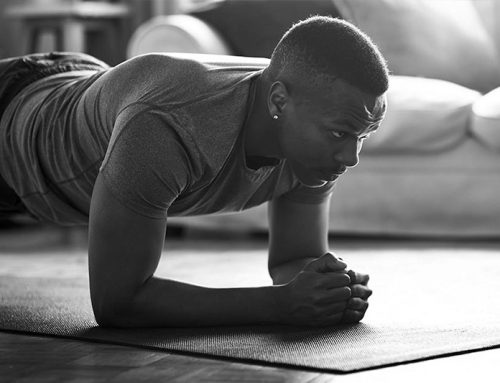Whether you want to build muscle, look cut, excel at endurance training, or achieve all-around fitness (or all of the above), versatility is key to your training. It’s easy to become stuck in the same lifting and cardio routines, and that can stall your progress. Sometimes it leads to strength imbalances, which then lead to injuries.
If you want to get into the best shape of your life, try adding some of these training methods to your routine:
Boxing
If strength training is your focus, it can be easy to get stuck in the cycle of lifting and cardio. But if you find cardio dull or are looking for a new challenge, you might want to add boxing to your routine.
Boxing is a uniquely beneficial sport because it involves both aerobic and anaerobic activity. It’s effective both strength training and cardio. Boxers try to stay in constant motion, so you’ll have constant footwork as your cardio. Throwing punches (and kicks, if you take up kickboxing) will help build muscular strength and endurance in your arms and upper body. And because it’s so challenging, boxing can dramatically increase your stamina. This stamina increase will benefit you in all other workouts you do.
Boxing is also an excellent way to increase your coordination. Specifically, you’ll get better at footwork, and your hand-eye coordination will improve, too.
As a bonus, boxing will also help you get more cut. It’s an excellent fat burner — depending on session intensity, you may burn up to 1000 calories in a single session. You can try traditional boxing, kickboxing, or both. Lots of gyms offer kickboxing classes, which offer a great full-body workout without the need for a sparring partner.
Dynamic and Isometric Strength Training
Most lifters primarily focus on dynamic movements, which are movements that involve movement of your joints — think curls, squats, or bench press. And that’s for good reason — generally, the most effective strength training workouts focus on dynamic movements.
However, if you want to develop total fitness (and do some core work, too), it’s a good idea to add in some isometric strength training. Isometric training means that you aren’t involving joint movement. This type of training is usually done against unmoving resistance. A plank is a good example — you’re staying still, so there’s no joint movement, and you’re pushing against the floor, which is not moving. Isometric exercises can be a great way to develop full-body strength, and many isometrics are likely movements that you already know.
Another type of resistance training you may want to include is resistance-band training. This kind of training keeps your muscles under constant tension, and it also makes it harder to rely on momentum. If you’ve ever tried bicep curls with a resistance band, you know that the feeling is decidedly different from a dumbbell curl because the band creates constant tension.
Time under tension is key to getting results. This doesn’t necessarily mean that resistance-band training is “better” than dynamic training — it’s simply a way to challenge your body and achieve versatility. Resistance bands can add some variety to your training while helping you build muscle effectively.
Core, Balance, and Flexibility Work
This is a broad group of training methods. But all three are essential to develop total-body fitness and prevent injuries. Depending on what approach you take, these exercises can look different. This is a good thing — it means there’s something for every fitness level and something for just about every personal preference.
Core training involves much more than working toward that six-pack. Ideally, you want to work on strengthening every part of the core, including your obliques, erector spinae, and transverse abdominus. In particular, working deeper core muscles like the transverse abdominus increases spinal support, which helps reduce your risk of a debilitating back injury. And if you experience back pain, deep core strengthening has the potential to alleviate it.
Some sample core exercises include the plank, the side plank, and the wall sit. Core stabilization exercises like the Paloff press are also good. Your trainer will be able to assess your core’s condition and develop a plan that can increase your core strength.
Balance training is another important facet of versatile training. Balance exercises can be combined with core exercises — one example is doing squats on a BOSU ball or wobble board. A weak core can make balancing a challenge, so it makes sense that these exercises are commonly done together.
Lastly, flexibility training is an important part of training despite the fact that it’s often overlooked. If you’re new to flexibility training, you may want to start with some simple stretches. From there, even yoga and pilates can be valuable tools for achieving optimum flexibility.
Endurance Training
When you think of endurance training, you probably imagine running marathons or spending hours on the rowing machine. And while you can choose these methods if you want, there’s a lot more to endurance training than you might think.
One especially effective form of endurance training is high-intensity interval training or HIIT. HIIT has the benefit of giving you an extraordinary cardio workout in a short amount of time, which is a good thing if you really dislike cardio.HIIT has been shown to burn up to 30% more calories than other forms of exercise, and your metabolic rate will stay elevated for hours after a HIIT session.
You can do a HIIT workout with just about any form of cardio. On a rowing machine, that might look like 30 seconds of high-intensity rowing followed by a minute or two of relaxed rowing. Most HIIT workouts only need 4-6 rounds to be effective. However, doing HIIT every single day can cause significant fatigue, so you might want to alternate it with long, easy runs or another form of cardio that’s less taxing.
Ideally, a well-rounded endurance training program will involve different types of exercise. You might swim one day, run the next, and bike the day after.
Lagree Fitness
If you have joint issues or are otherwise injury-prone, you might find Lagree Fitness to be a good option. However, this well-rounded workout is good for just about anybody. Lagree is a patented workout that combines strength training, cardio, endurance training, core work, balance training, and flexibility exercises. Each Lagree class involves all of these elements, and it can be adapted for any fitness level.
Lagree is designed to be a low-impact program, so it’s safe for those with joint issues. Depending on the type of injury, it can also be a useful way to train as you wait to completely heal.
Plyometrics
For those trying to achieve balanced fitness, power is often part of the equation. And while you can improve your power by powerlifting or doing other power sports, these sports aren’t for everyone.
Plyometrics are an excellent way to build power, and they can be built into just about any fitness routine. Simply put, plyometrics are movements that incorporate both speed and force. A plyometrics workout can incorporate hops, box jumps, pushups, and throwing.
Plyometrics are often a part of physical therapy since they allow you to return to optimal physical functioning after an injury. However, you don’t need to have a pre-existing injury to benefit from this type of training.
Functional Strength Training
For lots of people, strength training workouts focus on isolated movements. This can be great for muscle hypertrophy, but programs with this sort of focus are especially prone to creating strength imbalances.
To remedy that problem, many people turn to functional fitness training. Functional strength training helps you build all-over strength. Dips, squats, barbell rows, pull-ups, and the military press are all examples of functional strength training exercises.
Working on functional strength doesn’t mean you have to forgo all forms of isolation training, though — lots of lifters do both in one workout. It’s wise to start with your functional movements while you’re fresh, which lessens your chances of injury. Then, you can move on to isolation work.
Group Fitness
Some athletes prefer to train alone, and there’s something to be said for personalized fitness plans. But if you’re aiming for versatility in your training, group exercise classes can be a great way to mix up your routine, and it has some great benefits.
For starters, group fitness classes are a safe way to try out new forms of exercise. Since you have an instructor right there, they can point out any issues with the form. If you go to a gym that offers exercise classes, it also makes it easy to try a wide variety of class types you may have never even considered before. If you find a new exercise type you like, you can build it into your routine or opt to work on it with a personal trainer.
Group fitness classes are uniquely motivating. If you’ve ever taken a spin class, you probably noticed that it was a lot more fun than doing intervals on a stationary bike yourself. In a group class, you have the synergy of a whole group working toward a common goal, which can be a nice change.
Adding brand-new styles to your fitness routine might sound daunting, but you don’t have to do it alone. At Butchered Bodies, we believe in the power of a multifaceted approach to training. Our five trainers specialize in different fitness styles, so you’ll receive expert guidance on your journey to new levels of strength and fitness.





